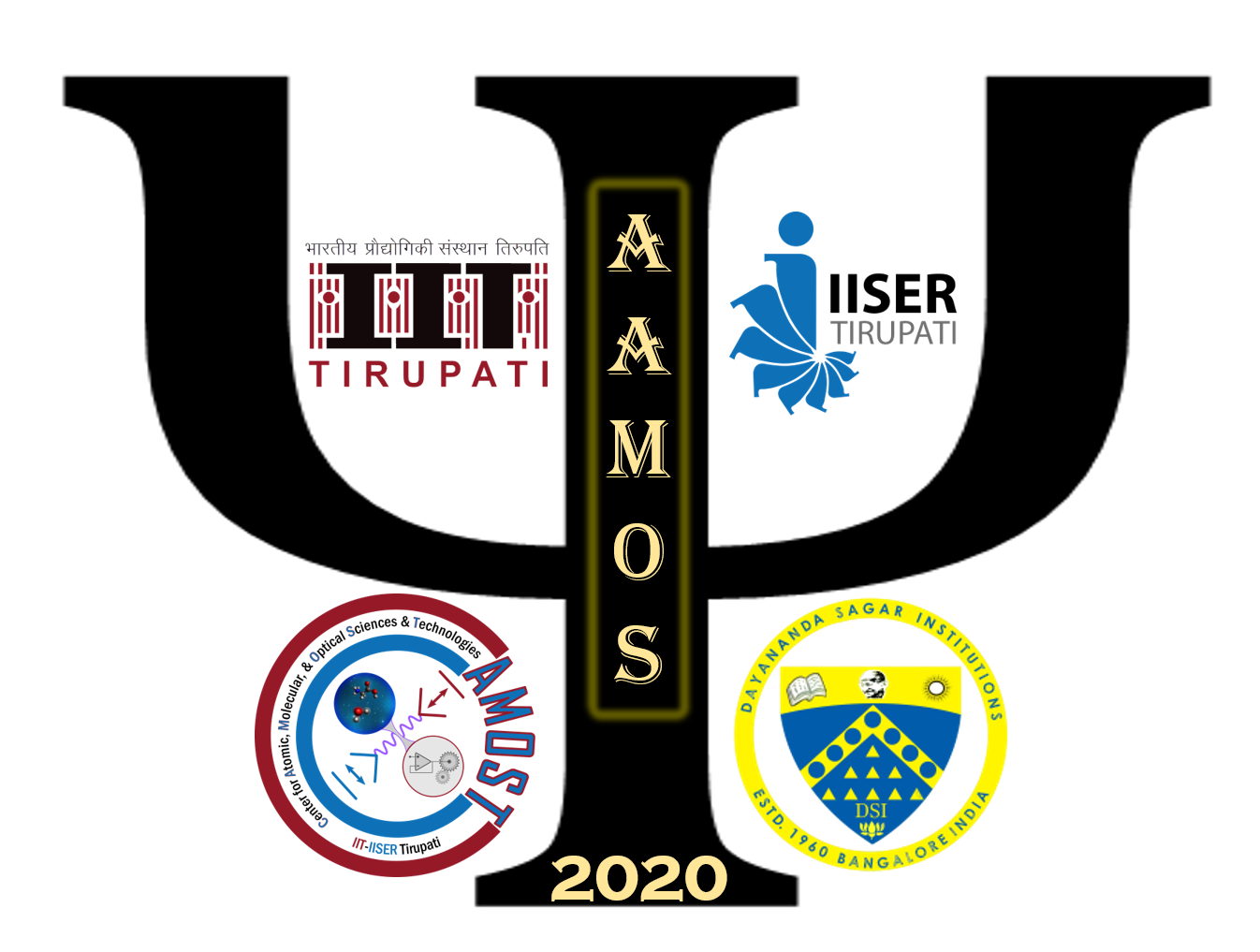
ABOUT AAMOS20
ADVANCES in ATOMIC, MOLECULAR, and OPTICAL SCIENCES 2020 will
address a few select themes in the general field of AMO sciences. The choice of topics is
unfortunately severely restricted by a choice made by the conveners to conduct the
conference on a web-based video-conferencing platform. This platform is forced on us by the
pandemic, but we decided to get maximal benefit out of it by making the conference
proceedings accessible live in various time-zones across the world. This restricted us to
three-hour duration on each of the five days. Even after admitting this restriction, we had to
leave out several important topics in AMO sciences, many of which are very close to our
hearts.
The conveners have therefore aspired to only illustrate rather than comprehensively cover
advances in five select areas:
| Day 1 (14th December, UTC 1500 to 1800): | Synchrotron Spectroscopy of Atoms and Molecules |
| Day 2 (15th December, UTC 0400 to 0700): | Time-resolved Atomic Processes |
| Day 3 (16th December, UTC 2000 to 2300): | Physics of Atoms and Molecules in Confinement |
| Day 4 (17th December, UTC 1200 to 1500): | Structure, Dynamics and Interactions of Ions |
| Day 5 (18th December, UTC 1200 to 1500): | Atomic and Molecular Physics with Lasers |
A sliding time-table during these five days is chosen to enable maximum global participation
in comfortable sunlight hours from your home or office. It needs no explanation that this is
difficult, and cannot be completely satisfactory. The conference timings are admittedly grossly
inconvenient for someone or the other on the globe, on one or more days of the conference,
including for some of the speakers and the Session chairpersons. We hope that partial
compensation for this inconvenience comes from the videoconferencing format; it eliminates
international flights to attend the conference. We could not totally avoid the price that must be
paid to avoid travel and consequent jet lag, but have attempted to minimise it. We sincerely
regret the inconvenience. We have tried to limit the inconvenience by restricting each day’s
session to a three-hour interval, as opposed to a normal eight-hour interval. This restriction
prevented us from having more talks, which we would have loved to have.
The dates for the conference are chosen to fall during the week right after the 80th birthday
of Professor Steven Trent Manson, to celebrate the rich contributions he has made to the
field of Atomic, Molecular, and Optical Sciences, for well over half a century. Professor
Manson’s global impact, and global collaborations, is also a factor that influenced the
sliding time-table format. Even with such a schedule, we could not accommodate several
topics, nor could we invite many speakers who we would have loved to hear. We do hope,
nonetheless, to illustrate at AAMOS20 many of the recent advances in the topics chosen over
the five days of the conference. We are very grateful to the galaxy of speakers who have
agreed to speak at AAMOS20.
Many participants will be able to join the conference live on the web. Many others will be
able to join on the YouTube where the conference would be telecast live, and also archived
on YouTube for future viewing.